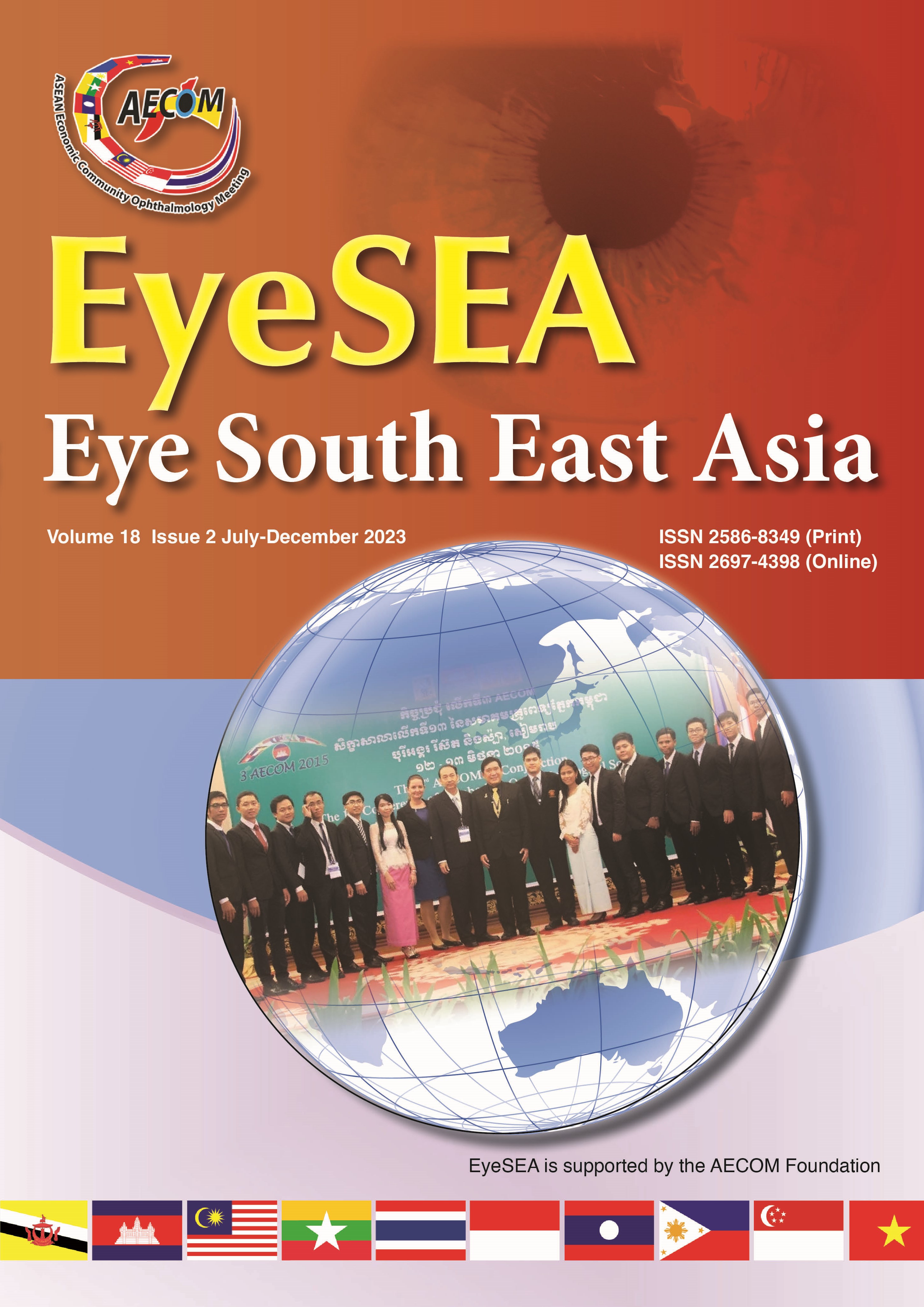The clinical characteristics of pediatric strabismus in Ho Chi Minh city Eye Hospital in 2020
Main Article Content
Abstract
Background: Pediatric strabismus is a common disorder that may lead to a severe decrease in visual quality. Updating the changes in disease characteristics through time is important for the diagnosis and prognostication of pediatric strabismus.
Methods: Retrospective cross-sectional study. Medical records of 1,101 patients with the diagnosis of pediatric strabismus from January 1st, 2020 to December 31st, 2020 were enrolled in this study. The medical records are included if suffcient information is available.
Results: We included 1,101 medical records in 2020. The prevalence of exotropia, esotropia and vertical strabismus were, in order, 68.4%, 29.3% and 2.3%. The prevalence of alternating strabismus and monocular strabismus were, in order, 74.8% and 25.2%. The prevalence of intermittent strabismus and manifest strabismus were, in order, 65.9% and 34.1%. Refractive errors exist in 87.3% of patients. Visual acuity could be recorded in 51.5% of patients, in which 31.8% of patients had a severe decrease of visual acuity (< 2/20). Amblyopia was recorded in 34% of patients, with 68.2% of whom from esotropia. Correcting refractive errors was the main treatment procedure (60.7%).
Conclusion: Pediatric strabismus may affect the children’s visual acuity deeply and therefore affect their quality of life. Early diagnosis of the disease takes the decisive role in preventing patients from amblyopia. As a large number of patients have refractive errors, early screening of the patient’s refraction is also mandatory.
Conficts of interest: The authors declare no confict of interest.
Article Details

This work is licensed under a Creative Commons Attribution-NonCommercial-NoDerivatives 4.0 International License.
References
Sharma P, Gaur N, Phuljhele S, Saxena R. What's new for us in strabismus? Indian J Ophthalmol. 2017;65(3):184-90.
Hashemi H, Yekta A, Jafarzadehpur E, Ostadimoghaddam H, Eshrati B, Mohazzab-Torabi S, et al. The prevalence of strabismus in 7-year-old schoolchildren in Iran. Strabismus. 2015;23(1):1-7.
Torp-Pedersen T, Boyd HA, Skotte L, Haargaard B, Wohlfahrt J, Holmes JM, et al. Strabismus Incidence in a Danish Population-Based Cohort of Children. JAMA ophthalmology. 2017;135(10):1047-53.
Rosman M, Wong TY, Koh CL, Tan DT. Prevalence and causes of amblyopia in a population-based study of young adult men in Singapore. American journal of ophthalmology. 2005;140(3):551-2.
Chew E, Remaley NA, Tamboli A, Zhao J, Podgor MJ, Klebanoff M. Risk factors for esotropia and exotropia. Archives of ophthalmology (Chicago, Ill : 1960). 1994;112(10):1349-55.
Matsuo T, Matsuo C. The prevalence of strabismus and amblyopia in Japanese elementary school children. Ophthalmic epidemiology. 2005;12(1):31-6.
Feinberg DL, Rosner MS, Rosner AJ. Validation of the Binocular Vision Dysfunction Questionnaire (BVDQ). Otol Neurotol. 2021 Jan;42(1):e66-e74.
Fieß A, Kölb-Keerl R, Schuster AK, Knuf M, Kirchhof B, Muether PS, et al. Prevalence and associated factors of strabismus in former preterm and full-term infants between 4 and 10 Years of age. BMC Ophthalmology. 2017;17(1):228.
VanderVeen DK, Allred EN, Wallace DK, Leviton A. Strabismus at Age 2 Years in Children Born Before 28 Weeks' Gestation: Antecedents and Correlates. Journal of child neurology. 2016;31(4):451-60.
Onua A. Risk Factors of Strabismus in Children in a Southern Nigerian Tertiary Hospital. World Journal of Ophthalmology & Vision Research. 2019;2.
Chen D, Li R, Li X, Huang D, Wang Y, Zhao X, et al. Prevalence, incidence and risk factors of strabismus in a Chinese population-based cohort of preschool children: the Nanjing Eye Study. The British journal of ophthalmology. 2021;105(9):1203-10.
Chia A, Dirani M, Chan YH, Gazzard G, Au Eong KG, Selvaraj P, et al. Prevalence of amblyopia and strabismus in young singaporean chinese children. Investigative ophthalmology & visual science. 2010;51(7):3411-7.
Qanat AS, Alsuheili A, Alzahrani AM, Faydhi AA, Albadri A, Alhibshi N. Assessment of Different Types of Strabismus Among Pediatric Patients in a Tertiary Hospital in Jeddah. Cureus. 2020;12(12):e11978-e.
Zhu H, Pan C, Sun Q, Huang D, Fu Z, Wang J, et al. Prevalence of amblyopia and strabismus in Hani school children in rural southwest China: a cross-sectional study. BMJ open. 2019;9(2):e025441.
Agaje BG, Delelegne D, Abera E, Desta K, Girum M, Mossie M, et al. Strabismus prevalence and associated factors among pediatric patients in southern Ethiopia: a cross-sectional study. The Journal of international medical research. 2020;48(10):300060520964339.
Tailor V, Bossi M, Greenwood JA, Dahlmann-Noor A. Childhood amblyopia: current management and new trends. Br Med Bull. 2016;119(1):75-86.


